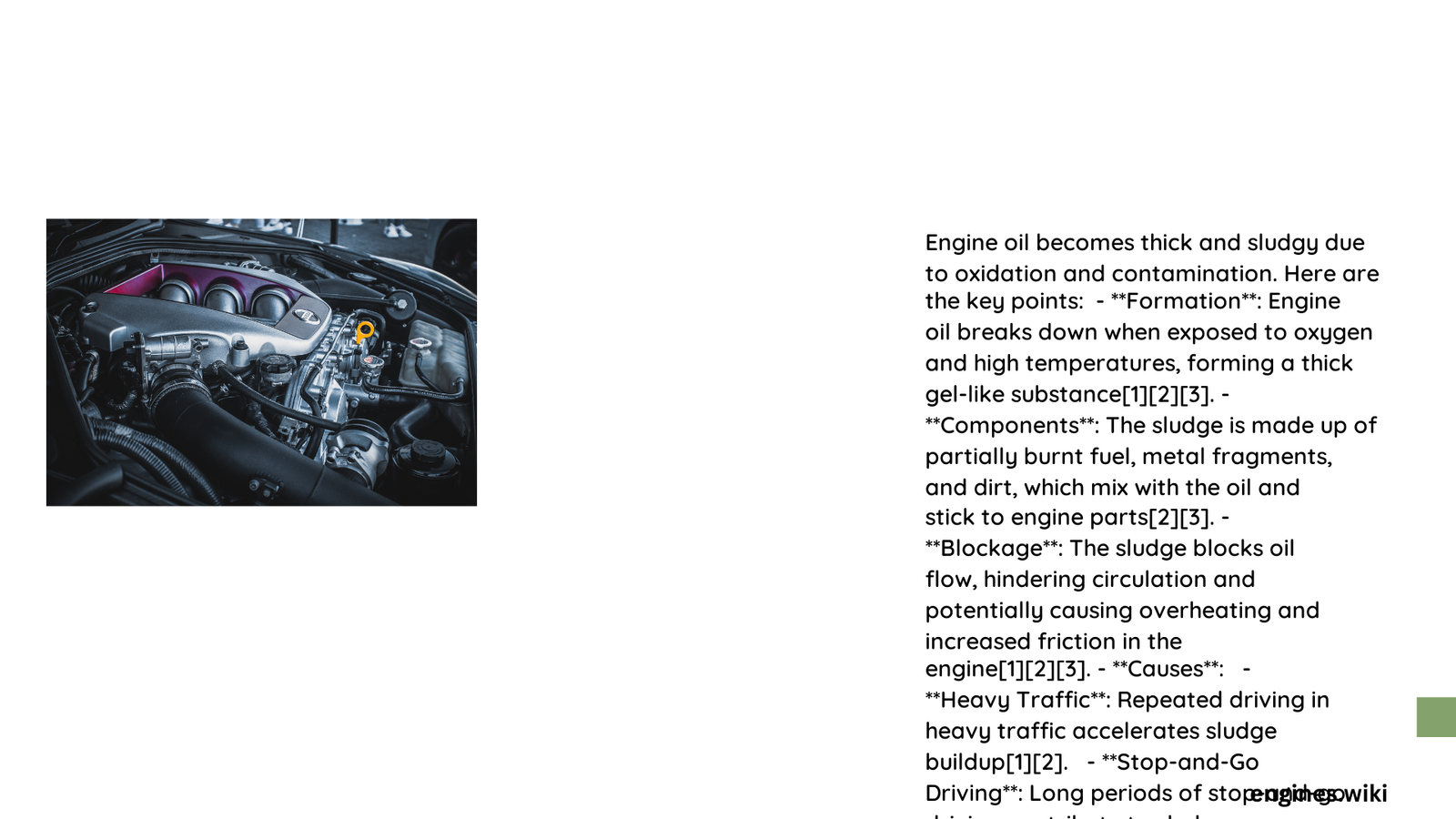Engine oil becoming thick and sludgy represents a critical automotive health issue that can dramatically compromise engine performance, lubrication efficiency, and overall vehicle longevity. When engine oil transforms from a smooth, liquid lubricant to a dense, gelatinous substance, it signals potential mechanical problems requiring immediate professional attention and comprehensive diagnostic evaluation.
What Causes Engine Oil to Become Thick and Sludgy?
Why Do Temperature Extremes Impact Oil Consistency?
Temperature plays a pivotal role in oil degradation. High operating temperatures accelerate chemical breakdown, causing oil molecules to oxidize and form complex molecular structures that increase viscosity. Key temperature-related factors include:
- Sustained High Engine Temperatures: Prolonged operation above recommended thermal ranges
- Frequent Short-Distance Driving: Prevents complete engine warm-up
- Inadequate Cooling System Performance
How Do Contaminants Contribute to Sludge Formation?
Contaminants dramatically influence oil consistency and sludge development:
| Contaminant Type | Impact on Oil |
|---|---|
| Dirt/Dust Particles | Increases abrasive wear |
| Combustion Byproducts | Promotes chemical degradation |
| Metal Particulates | Accelerates oxidation process |
What Are the Primary Symptoms of Thick and Sludgy Engine Oil?
Recognizing early warning signs helps prevent extensive engine damage:
- Reduced Oil Circulation
- Sluggish oil movement
- Increased internal engine friction
-
Potential lubrication system blockages
-
Abnormal Engine Sounds
- Knocking or ticking noises
- Increased mechanical resistance
-
Potential bearing/component wear
-
Performance Degradation
- Decreased fuel efficiency
- Reduced horsepower
- Inconsistent acceleration
How to Prevent and Address Thick and Sludgy Engine Oil?

Recommended Maintenance Strategies
- Regular Oil Analysis: Quarterly professional oil testing
- Consistent Oil Change Intervals: Follow manufacturer recommendations
- High-Quality Oil Selection: Choose synthetic or premium blends
- Engine Cooling System Maintenance
What Professional Diagnostic Steps Should You Take?
Professional mechanics typically employ:
- Comprehensive oil analysis
- Viscosity measurement
- Spectroscopic contamination assessment
- Engine compression tests
Technical Considerations for Oil Viscosity Management
Understanding Viscosity Specifications
- SAE Ratings: Indicate oil’s temperature performance
- Multigrade Oils: Provide broader temperature adaptability
- Synthetic Formulations: Offer superior thermal stability
Cost Implications of Neglected Oil Maintenance
| Maintenance Level | Potential Repair Cost |
|---|---|
| Proactive Maintenance | $50 – $200 |
| Reactive Repair | $1,500 – $4,000 |
| Complete Engine Replacement | $3,000 – $8,000 |
Conclusion
Addressing thick and sludgy engine oil requires proactive maintenance, understanding underlying mechanisms, and commitment to regular professional diagnostics. Vehicle owners must prioritize oil health to ensure optimal engine performance and longevity.
